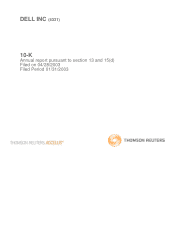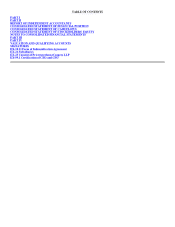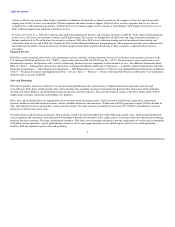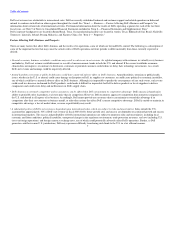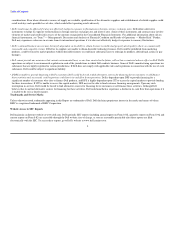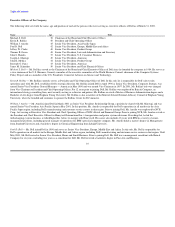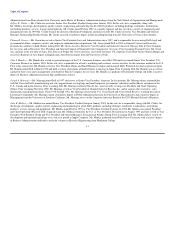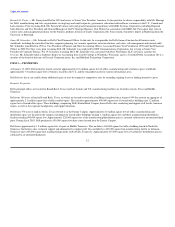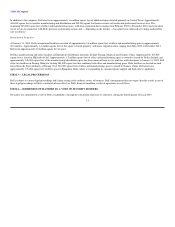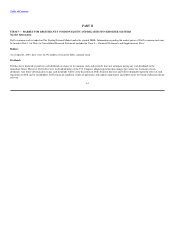Dell 2002 Annual Report Download - page 8
Download and view the complete annual report
Please find page 8 of the 2002 Dell annual report below. You can navigate through the pages in the report by either clicking on the pages listed below, or by using the keyword search tool below to find specific information within the annual report.
Table of Contents
programs targeted at federal, state and local governmental agencies as well as specific healthcare and educational markets.
Dell markets its products and services to small-to-medium businesses and consumers primarily by advertising on television and the Internet, advertising in a
variety of print media, and by mailing a broad range of direct marketing publications, such as promotional pieces, catalogs and customer newsletters. A
majority of the sales to small-to-medium businesses and consumers occur online through www.dell.com.
Manufacturing
Dell manufactures most of the products it sells. Dell has six manufacturing locations worldwide to service its global customer base. Dell believes that its
manufacturing processes and supply-chain management techniques provide it a distinct competitive advantage. Its build-to-order manufacturing process is
designed to allow Dell to significantly reduce cost while simultaneously providing customers the ability to customize their product purchases. Dell's supply
chain management decreases Dell's exposure to the risk of declining inventory values, allows Dell to quickly incorporate new technologies or components
into its product offerings and allows Dell to rapidly pass component cost savings directly to customers.
Dell's manufacturing process consists of assembly, functional testing and quality control. Testing and quality control processes are also applied to
components, parts and subassemblies obtained from suppliers. Quality control is maintained through the testing of components, parts and subassemblies at
various stages in the manufacturing process. Quality control also includes a burn-in period for completed units after assembly, on-going production reliability
audits, failure tracking for early identification of production and component problems and information from Dell's customers obtained through services and
support programs. Dell is certified, worldwide, by the International Standards Organization to the requirements of ISO 9001: 2000. This includes the design,
manufacture, and service of computer products in all Dell regions.
Product Development
Dell's product development efforts are focused on designing and developing standards-based, competitively priced products that incorporate the technologies
and features that Dell believes are most desired by its customers. To accomplish this objective, Dell has developed cooperative, working relationships with
many of the world's most advanced technology companies. Working with these companies, Dell engineers manage quality, integrate technologies and design
and manage system architecture. This cooperative approach allows Dell to determine the best method and timing for delivering new technologies to the
market.
During fiscal 2003, Dell's research, development and engineering expenses were $455 million, compared with $452 million for fiscal 2002 and $482 million
for fiscal 2001. Dell invests in research, development and engineering activities to develop and introduce new products and to support its continued goal of
improving and developing efficient procurement, manufacturing and distribution processes.
Patents, Trademarks and Licenses
Dell holds a portfolio of 867 U.S. patents and 562 U.S. patent applications pending, and has a number of related foreign patents and patent applications
pending. Dell's U.S. patents expire in years 2003 through 2022. The inventions claimed in those patents and patent applications cover aspects of Dell's current
and possible future computer system products, manufacturing processes and related technologies. Dell is developing a portfolio of patents that it anticipates
will be of value in negotiating intellectual property rights with others in the industry.
5

